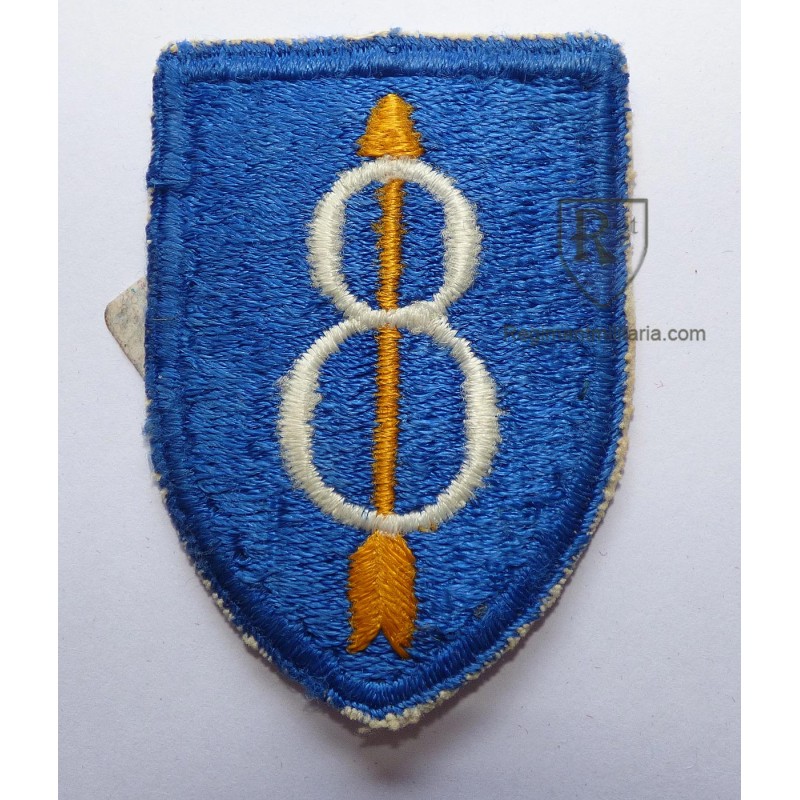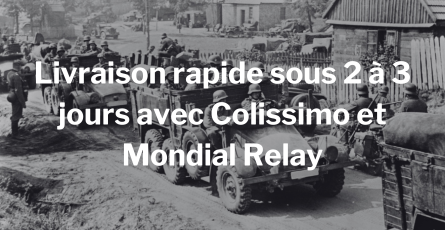

Banner

Banner




8th Infantry Division Patch.
 Garanties sécurité
Garanties sécurité
(à modifier dans le module "Réassurance")
 Politique de livraison
Politique de livraison
(à modifier dans le module "Réassurance")
 Politique retours
Politique retours
(à modifier dans le module "Réassurance")
Shoulder insignia, of Second World War origin, of the 8th Infantry Division.
During World War II, the 8th Infantry Division was sent to Europe. After undergoing training in Ireland, the 8th ID landed on Utah Beach in Normandy on July 4, 1944 and entered the battle on July 7. During the Battle of the Hedgerows, it crossed the Ay River between Lessay and Périers on July 26, then liberated the city of Rennes on August 4 and that of Brest in September1. The Crozon Peninsula was liberated on September 19.
After these actions the 8th DI crossed France from West to East and was engaged in Luxembourg on the German border, took part in the Battle of the Hürtgen Forest on November 20, then liberated Hürtgen on the 28th and Brandenburg on December 3 and pushed to the banks of the Roer1 river which was crossed on February 23, 1945, Düren was liberated on the 25th and the Erft Canal on February 28. The 8th DI reached the Rhine, near Rodenkirchen, on March 7 and held its positions along the river near Cologne. By early March 1945, the 8th DI had advanced to the Rhineland.
On April 6, 1945 the 8th DI participated in the North-West in the destruction of enemy forces in the Ruhr Pocket and on the 17th its mission was accomplished. Having secured the area, the 8th Infantry Division, under the operational control of the British Second Army, crossed the Elbe on 1 May and liberated Schwerin at the end of the war in Europe.
On 2 May 1945, as it advanced into northern Germany, the 8th Infantry Division encountered the Neuengamme concentration camp and the Wöbbelin extermination camp, near the town of Ludwigslust. The SS had established the Wöbbelin camp in early February 1945 to house prisoners from Nazi concentration camps who had been evacuated to prevent their liberation by the Allies. At Wöbbelin there were approximately 5,000 prisoners, many of whom were suffering from starvation and disease. The hygienic conditions in the camp were deplorable when the 8th Infantry Division and the 82nd Airborne Division arrived. There were only small amounts of food or water and some prisoners resorted to cannibalism. Within a week of liberation, more than 200 prisoners died. Under these circumstances, the American Army ordered the inhabitants of Ludwigslust to visit the camp and bury the dead.
Reference: F2E456
Reference: ALG171
Reference: F2E464

8th Infantry Division Patch.
check_circle
check_circle